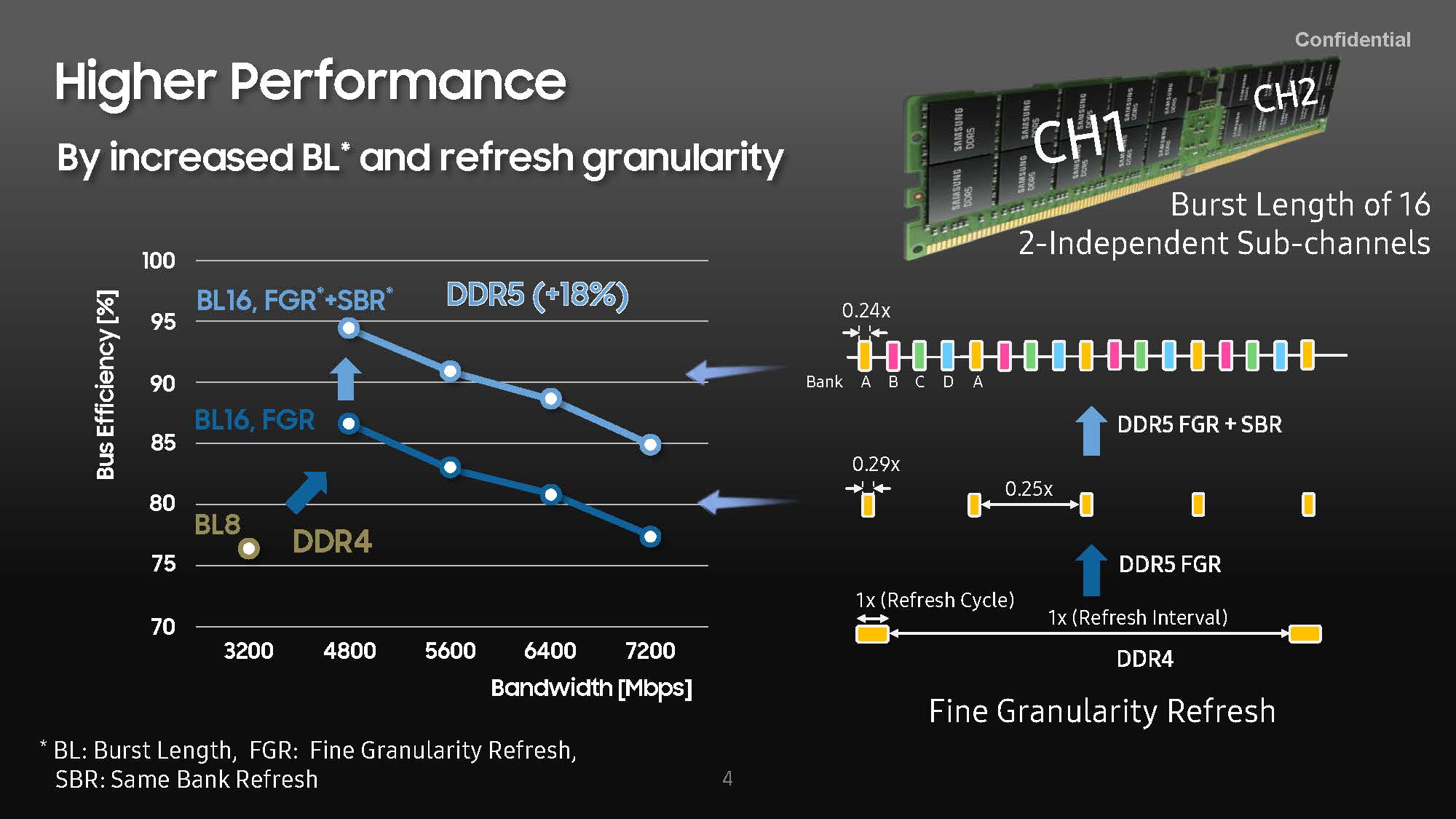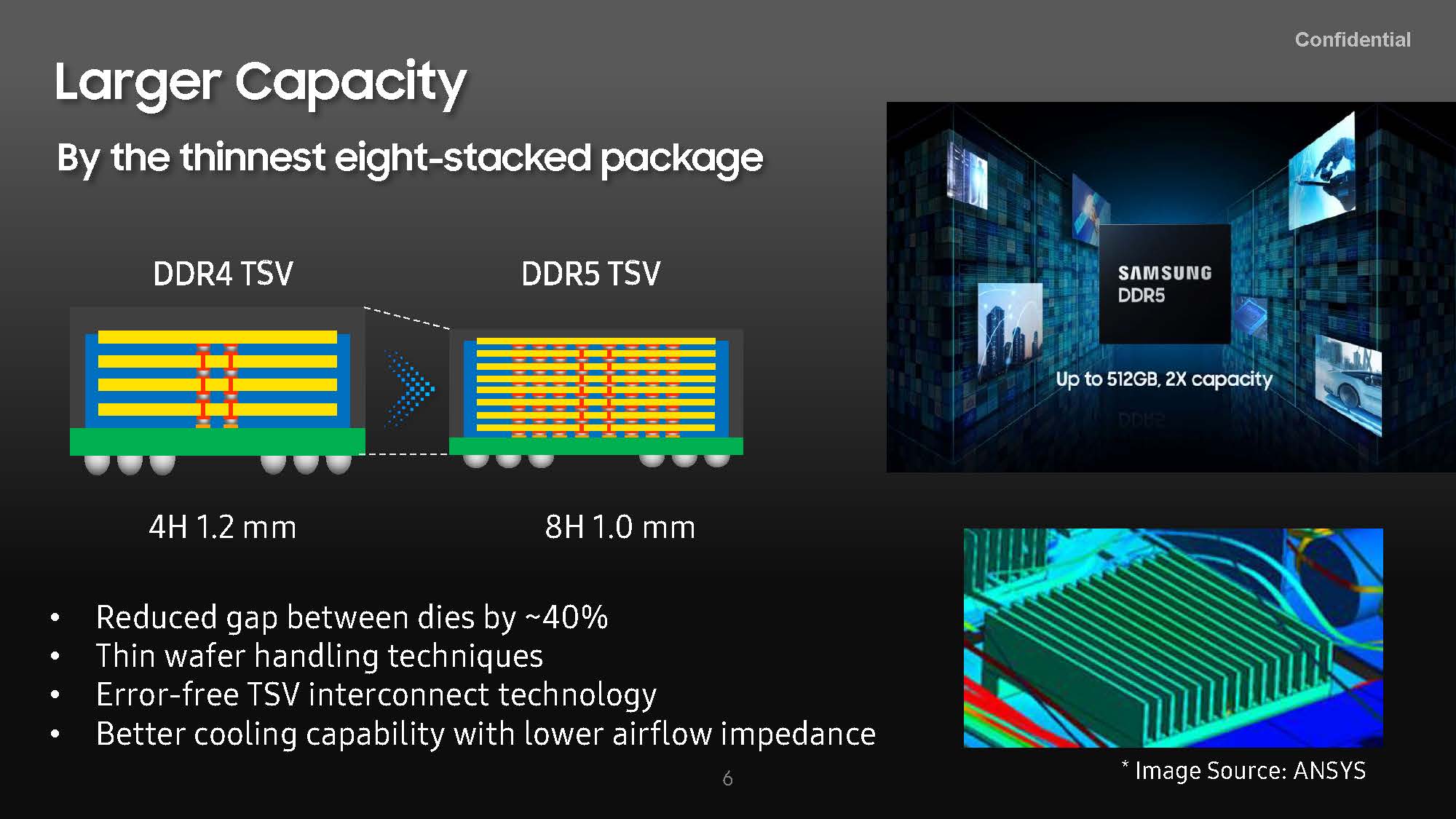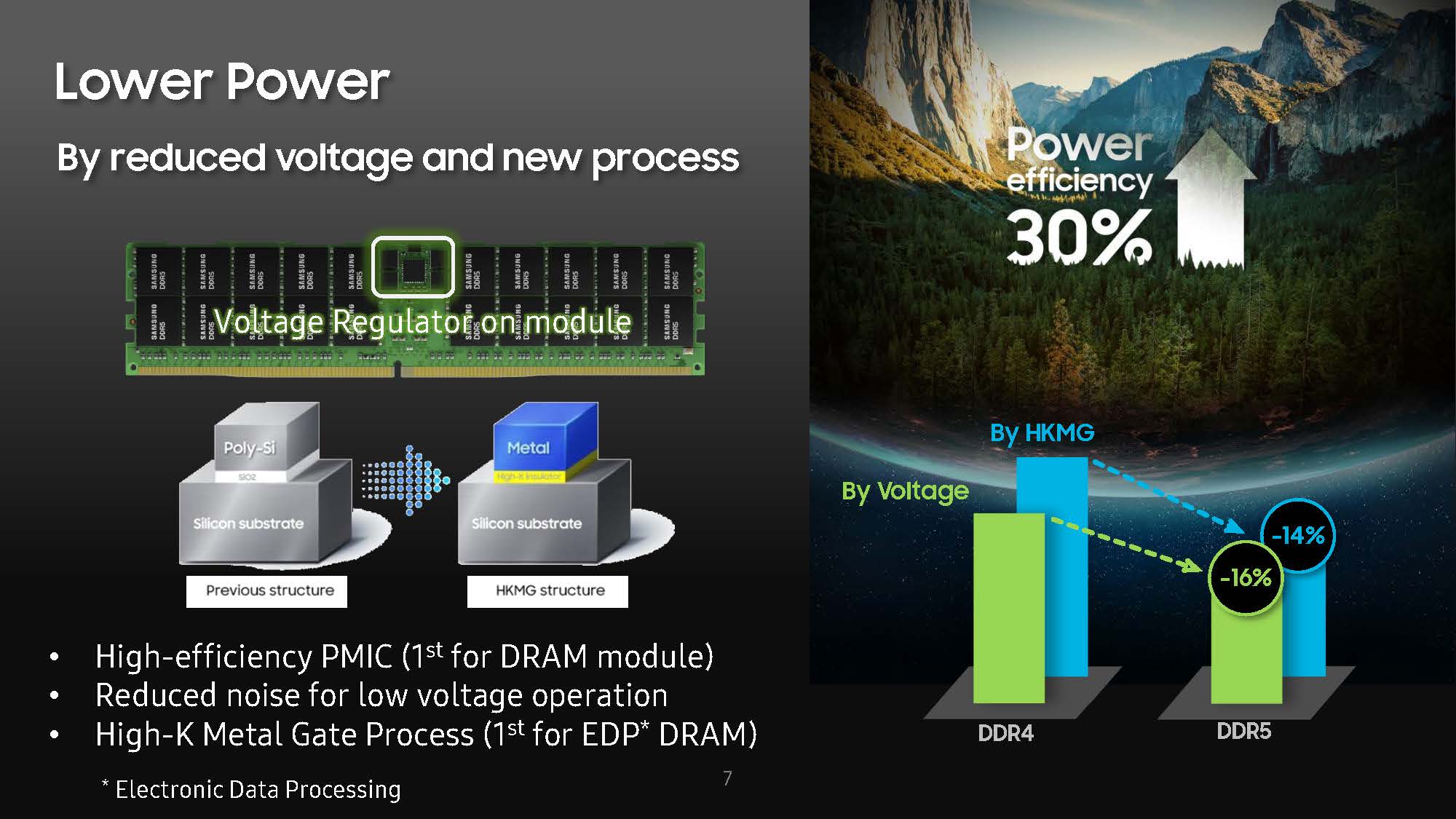Samsung has announced at Hot Chips 33 that the company has developed the industry's first DDR5-7200 512GB memory module. In comparison to DDR4, Samsung's DDR5-7400 memory module offers 40% higher performance with twice the capacity at a mere 1.1V.
The company built its DDR5-7200 memory module with eight-stacked DDR5 dies that are interconnected with TSV (through-silicon-via) technology. This is a huge improvement over DDR4, which was previously limited to four DDR4 dies. Despite a more dense design, the DDR5 stack measures 1.0mm in comparison to DDR4's 1.2mm. Utilizing thin wafer handling techniques, Samsung was able to reduce the gaps between the dies by 40%, allowing a height reduction on the stacks.
According to Samsung's presentation, the manufacturer has implemented Same-Bank refresh (SBR) with its DDR5-7200 memory module. Samsung's touting an efficiency uplift of the DRAM bus by up to 10%. The company also touched on the new decision feedback equalizer (DFE) that helps improve signal stability.






The DDR5-7200 memory module operates at 1.1V, just 0.92x the voltage for DDR4. The improved power efficiency was possible thanks to the high-efficiency power management IC (PMIC), voltage regulator and the High-K Metal gate process. Samsung stated that its PMIC not only contributes to lower voltage operation, but it also reduced the noise in the process. As expected with DDR5, Samsung's memory module comes with on-die error-correction code (ODECC) to ensure more reliable and secure data handling.
Samsung's 512GB DDR5 memory module is exciting, but it's aimed towards the data center and server market. Consumer DDR5 memory will likely top out at 64GB. However, that doesn't take the excitement away from the fact that Intel and AMD's next-generation platforms will support an abundant amount of memory. With the introduction of 32GB DDR4 memory modules, mainstream users could have up to 128GB of memory on a motherboard with four DDR4 slots. Assuming that mainstream DDR5 hits 64GB, even average Joes can have up to 256GB of memory, something that wasn't previously available outside of server platforms.
Samsung expects mass production for its DDR5-7200 512GB memory modules to commence by the end of the 2021. The company believes that DDR5's shift over to the mainstream market won't happen until 2023 or 2024. However, Intel's 12th Generation Alder Lake hybrid chips, which are the first mainstream processors to support DDR5, will lead the charge when they debut in Fall 2021.
Get Tom's Hardware's best news and in-depth reviews, straight to your inbox.

Zhiye Liu is a news editor, memory reviewer, and SSD tester at Tom’s Hardware. Although he loves everything that’s hardware, he has a soft spot for CPUs, GPUs, and RAM.
-
Alvar "Miles" Udell 8x512GB RAM in a 64 core Threadripper system...Reply
Split that into 16 virtualized systems for 1-4 core CPU, configure 220-240GB RAM as a RAM Drive leaving 16-36GB RAM...Half all that for 32-2 core systems...
Sounds like the perfect way to cut the operating overhead and footprint of places like libraries, cyber cafes, schools... -
samopa With servers usually have 16-32 memory slots, In memory tablespace is become more affordable.Reply -
xixou Typo in the article:Reply
Samsung expects mass production for its DDR4-7200 512GB memory module
Should be DDR5 -
nibb0r 7.2Gb/s, 512GBReply
since when is RAM slower than an NVMe SSD? Or is it 0.9GB/s per module (I see 20 modules in the graphic)? Or is it 0.9GB/s per stack (8 stacks/module * 20 modules leads to 160 stacks*0.9GB/s/stack = 144GB/s)? -
jbo5112 Reply
It's 7.2Gb/s per IO pin. Each DIMM is 64-bit (maybe extra for ECC), so it's for 57.6 GB/s for 1 DIMM. For a system with 8 channel memory, it's upward of 400GB/s.nibb0r said:7.2Gb/s, 512GB
since when is RAM slower than an NVMe SSD? Or is it 0.9GB/s per module (I see 20 modules in the graphic)? Or is it 0.9GB/s per stack (8 stacks/module * 20 modules leads to 160 stacks*0.9GB/s/stack = 144GB/s)?